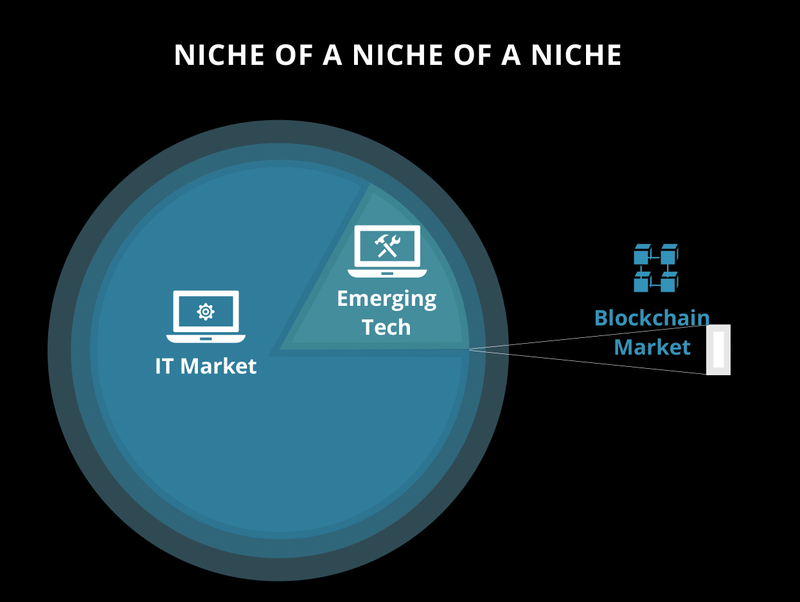Latest news about Bitcoin and all cryptocurrencies. Your daily crypto news habit.

Everyone’s talking about how this tech is supposed to “remove trust from the equation”. And in theory these systems do that, almost any human endeavor can now be accomplished without risk of fraud or flaking out.
However, there are important things leaders in the space need to understand:
- Public doesn’t care about using Blockchain-based stuff to replace existing systems. It’s a debate solely between business and governments.
- The new drove of crypto-entrepreneurs puts solutions before problems, sings praises to tech without iron-clad value propositions, and confuses the average person.
- This is why despite being around for 12 years, the market is still a niche of a niche of a niche.
I.e, we are the 1% of the 7% of the 5%, if you want to get technical.
Speaking of pretty visual aids, that one pixel right here is the market:
 Did you guys know that Ancient Greeks practically invented the steam engine?
Did you guys know that Ancient Greeks practically invented the steam engine?
Well, they did, it was called the Aeolipile. Here is the way Vitruvius described it at the time:
- “.. Thus from this slight and very short experiment we may understand and judge the mighty and wonderful laws of the heavens and the nature of winds”
A mere curiosity to judge the laws of the heavens. That’s the state of Blockchain today, and if we navel-gaze and keep it on the “short experiment” level, it will stay this way. Oddly enough I have more respect for Evangelist weirdos with Bitcoin hats and golden canes than safe corporate projects afraid to put some bite into their marketing.
Moving on to the reason why I just wrote that:
The Blockchain Paradox
The tech we develop might be objective, but human decision-making is anything but that. We aren’t logical creatures when it comes down to it.
So as much as you might want to eliminate trust as a factor?
The very existence of your project, team, company still depends on public and private support. This is why regulation is such a hot topic, why we experiment with various forms of funding, and why most of these projects hire seven figure agencies behind them. We instinctively understand the irrationality of the world.
Hence the paradox: we need to generate trust in practice to get rid of it in theory.
How is this trust generated, then?
I like looking at failures and screwups before getting to the right ways of doing things. So I came up with this pretty thing:
Front-loading — our tendency to screw up on the explanation side of things. This encompasses the failure of describing how certain technologies/projects/platforms work — we tend to front-load the explanations and throw everything and the kitchen sink into the first five minutes of presenting them.
It’s why most people think the tech world has a high barrier to entry. That’s the fault of software entrepreneurs out there.
Risk — that’s perceived risk on the side of your audience, not the risks you take. Put bluntly, we make things scarier than they should be. Low perceived risk is also why stuff like real estate is sexy with people, even though it actually is objectively a worse investment than software.
I’ll get some flak for this for sure. In for a penny, in for a pound. Get on with the times, old folks.
Sameness — that one is self-explanatory. Tech companies are notorious for using generic futuristic aesthetics and stealing stock marketing bullets from one another. Authenticity is the enemy of most tech firms that aren’t directly focused on entertainment (even some gaming companies are awful at it, though). The sameness is especially terrible in Blockchain, where every Joe Schmo can buy assets for $300 and begin his crowdfunding crusade.
I wrote a whole short e-book about it called “Nigh of the Living ICOs”. That’s how bad it got.
Taking on the Unholy Triad
I will outline 3 things you can do for each category. I won’t get into depth, each one could be an article in and off itself. This entire subject could fill countless books — so let’s keep it focused.
1. Unloading the front-load
- Earn the right to introduce a project before diving in. Relating to pains, fears, and uncertainties is easy. Relating to abstract ideas and blueprints is tough. That’s why dating websites are better in their presentation than most of us can ever be — just a fact of life.
- Offset the education. Explaining everything in one go seems like a thing to do, but short-term memory is finite. Consistency brings things home. That’s why most of the things I’m talking about here were already established in my earlier work. And if you’re new, you’ll easily get it down the line.
- One revolution at a time. Non-stop listing of benefits splits focus. With one too many problems on their mind, people get frustrated and find something better to do. In simple words, CAN IT WITH YOUR BIG CLAIMS. Make one big claim, bring it home, then go for the next one. Rapid firing one after the other is going to get you taken for a fool.
2. Risky business.
- Say it out loud. Entrepreneurs downplay concerns about their projects. Thing is, these are already on everyone’s mind. Silence makes them fester. Get the bad stuff out of the way first before you can get to the good stuff.
- Indirect claims might be an issue. See what I did there? I was being cute. We tend to be skeptical about everything that has a qualifier next to it. «Prospective» users and «possible» results increase perceived risk. Saying less or nothing is better than waffling.
- Scams bring us together. If you want to make friends in the crypto-community, expose some shady practices. Thankfully, there’s no shortage of those.
3. Sameness is the devil
- Unboring (unbore?) your message. Disrupting and revolutionizing isn’t enough anymore. Most of us poke fun at this, but struggle with words when asked how we’re different. What’s your answer?
- Roadmaps became a punchline for a reason. Future expectations and projections are a lot like small talk. They may create basic rapport, but will never help build a lasting relationship. If you want to stand out, talk about your project in the present tense.
- This isn’t your story. Emerging markets struggle with offering an immediate incentive for the client or investor. So it‘s easy to miss the point and make it about you and the product instead. That‘s why most whitepapers read the same. Shift the center of your attention.
There is also this neat audience graph from a keynote I did
It’s from two great reports you want to go download and read in their entirety. They’re free. Deloitte Blockchain report & Edelman Millenials With Money
(I know their 2019 report is out. It has different highlights)
Stuff on the top is just breakdown of respondents to the Deloitte survey. I.e, people who thought they were qualified to talk about this. It also happens to be people who have most to do with this Blockchain stuff.
People you want to start talking to, if you are in the niche.
Instead of chasing the nonexistent “wider audience” for your “mass adoption”.
… but I may have Viziered too much for one day. That is a subject for another time.
 Unrelated illustration of the Aeolipile
Unrelated illustration of the Aeolipile
For now, let's focus on not embarrassing ourselves in the basics of making a value proposition. These sorts of failures to differentiate hurt the entire industry.
Failing to see the actual value in these projects brings us closer to Aeolipile territory. We don't want another Aeolipile situation.
Alex Partin helps entrepreneurs in emerging industries and discusses challenging topics such as this one every day at https://alexpartin.com
Entrepreneurs vs The Blockchain Paradox was originally published in Hacker Noon on Medium, where people are continuing the conversation by highlighting and responding to this story.
Disclaimer
The views and opinions expressed in this article are solely those of the authors and do not reflect the views of Bitcoin Insider. Every investment and trading move involves risk - this is especially true for cryptocurrencies given their volatility. We strongly advise our readers to conduct their own research when making a decision.
